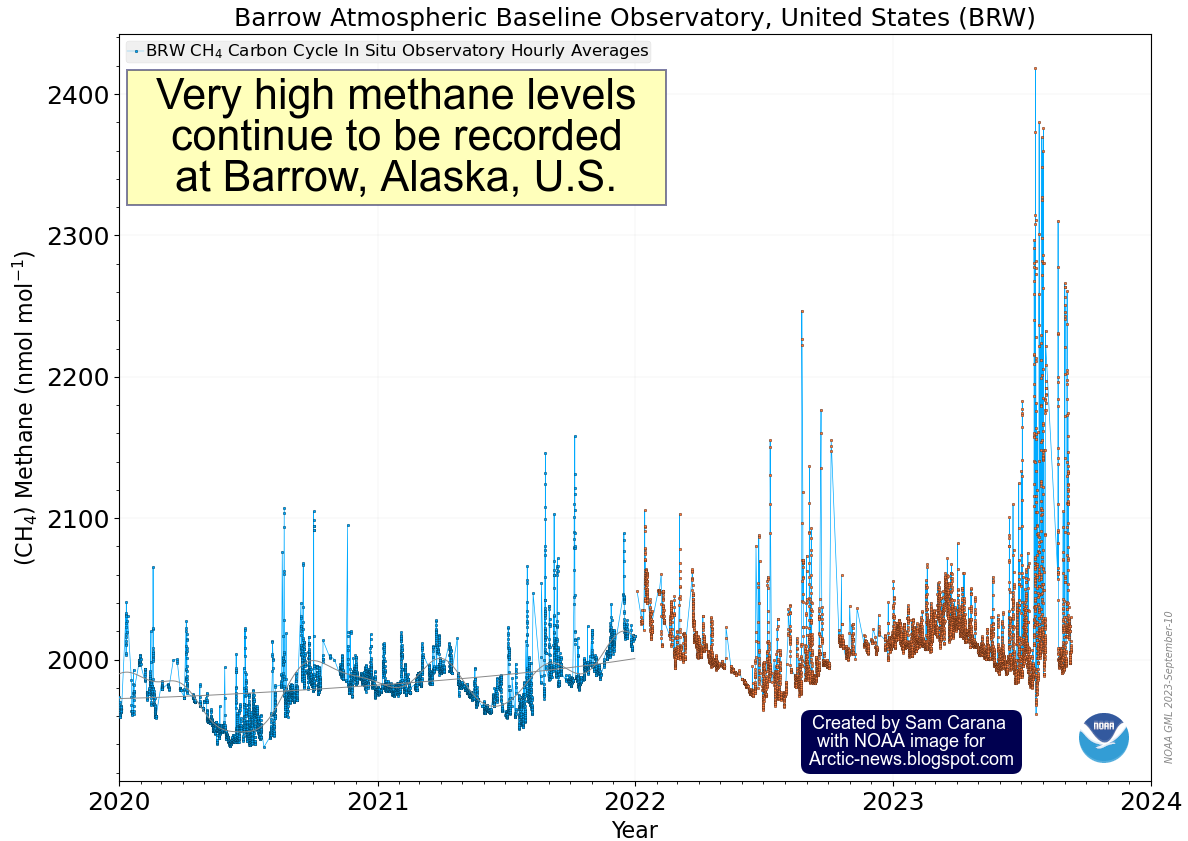The image below, adapted from Climate Reanalyzer, shows that on September 8, 2023, the North Atlantic sea surface reached a new record high temperature, of 25.4°C, even higher than the record reached the day before.
The situation is critical! More heat entering the Arctic Ocean threatens to destabilize hydrates and cause huge amounts of methane to erupt and enter the atmosphere.
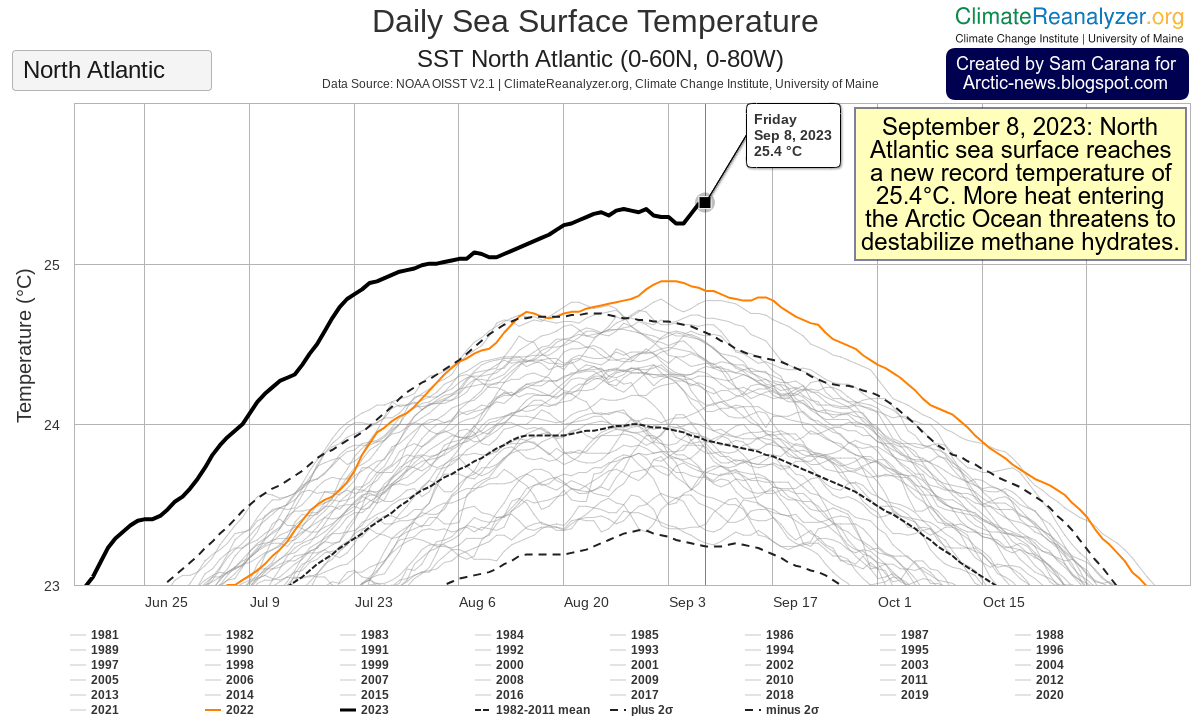
The image below, adapted from NASA Worldview, shows the poor state of the sea ice.
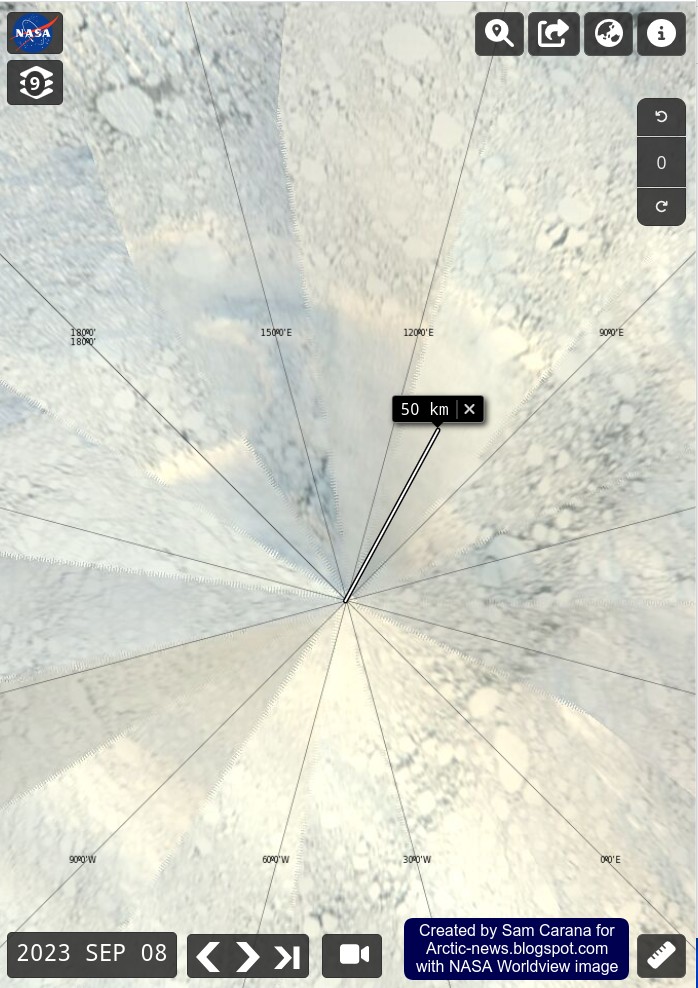
On September 8, 2023, the Polarstern reached the North Pole. The image below shows the research vessel and the sea ice at the North Pole.
#Polarstern reaches the #NorthPole for the seventh time 🫶Five weeks after setting sail from Tromsø, our research vessel makes a stop at the northernmost point on Earth. #AWI https://t.co/iNxZYZUSk3
— AWI Media (@AWI_Media) September 8, 2023
📸Esther Horvath pic.twitter.com/E4uuzosbtU
The image below, adapted from University of Bremen, shows Arctic sea ice concentration and the route followed by the Polarstern.
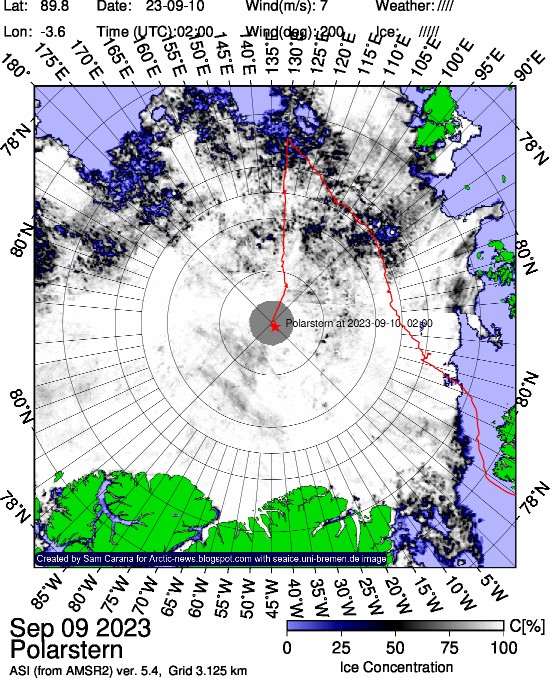
The threat is that, as the water of the Arctic Ocean keeps heating up, heat will reach the seafloor and destabilize methane hydrates contained in sediments at the seafloor, resulting in eruptions of huge amounts of methane.
Erupting from the hydrates occurs at great force, since the methane expands 160 when decompressed, resulting in the methane rapidly rising in the form of plumes, leaving little or no opportunity for microbes to decompose the methane in the water column. Furthermore, the atmosphere over the Arctic contains very little hydroxyl, resulting in methane persisting in the air over the Arctic much longer than elsewhere.
After months of very high temperatures, the Arctic reached a new record high temperature for the time of year, i.e. 1.52°C on September 10, 2023, an anomaly of 2.25°C.
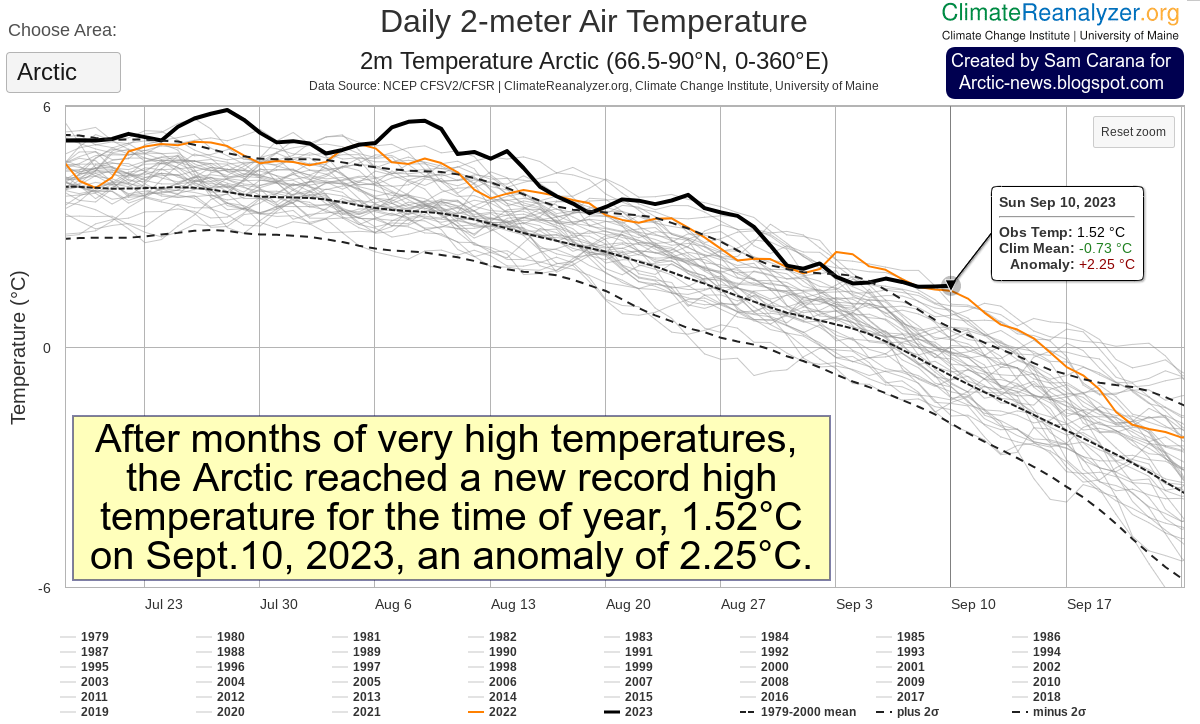
Meanwhile, global sea ice extent is much lower than in any other year on record for this time of year.
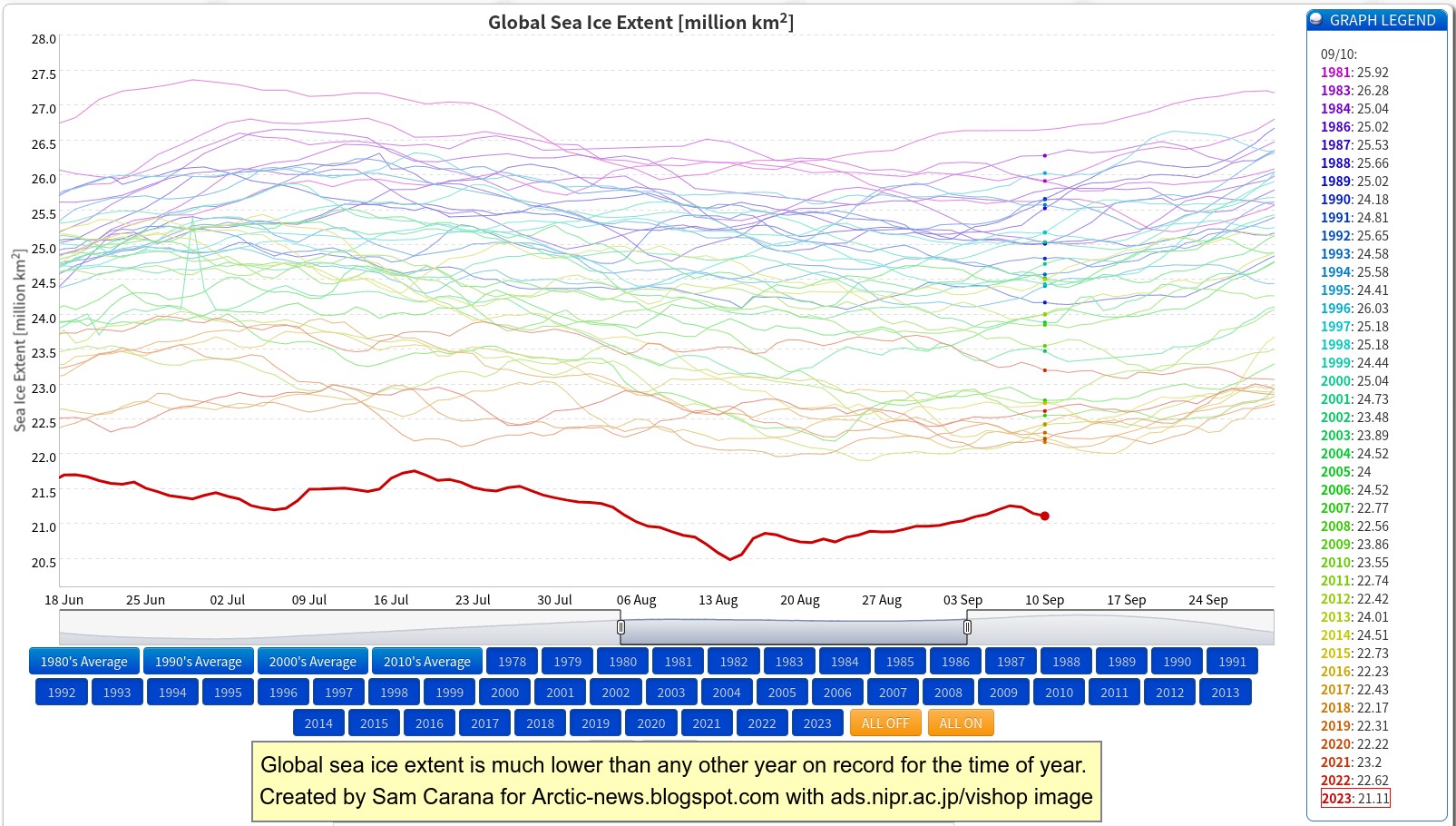
Ominously, very high methane levels continue to be recorded at Barrow, Alaska, U.S.
Conclusion
The situation is dire and is getting more dire every day, which calls for a Climate Emergency Declaration and implementation of comprehensive and effective action, as described in the Climate Plan with an update at Transforming Society.
Links
• Climate Reanalyzer - North Atlantic sea surface temperature
https://climatereanalyzer.org/clim/sst_daily
• NASA Worldview
https://worldview.earthdata.nasa.gov
• Polarstern reaches North Pole - Research icebreaker at the northernmost point of the earth for the seventh time
https://www.awi.de/en/about-us/service/press/single-view/polarstern-erreicht-nordpol.html
• University of Bremen - Arctic sea ice concentration
https://seaice.uni-bremen.de/start
• Arctic Data archive System
https://ads.nipr.ac.jp/vishop/#/extent
• NOAA - Barrow Atmospheric Baseline Observatory, United States
https://gml.noaa.gov/dv/iadv/graph.php?code=BRW&program=ccgg&type=ts
• Climate Plan
https://arctic-news.blogspot.com/p/climateplan.html
• Transforming Society
https://arctic-news.blogspot.com/2022/10/transforming-society.html
• Climate Emergency Declaration
https://arctic-news.blogspot.com/p/climate-emergency-declaration.html

